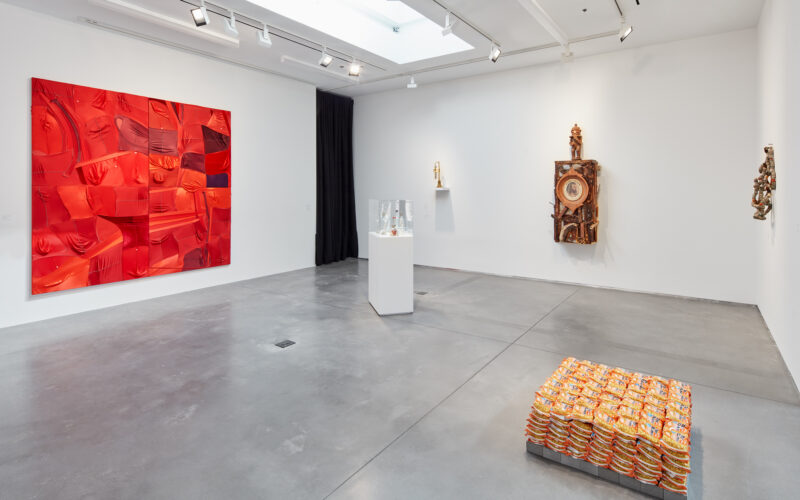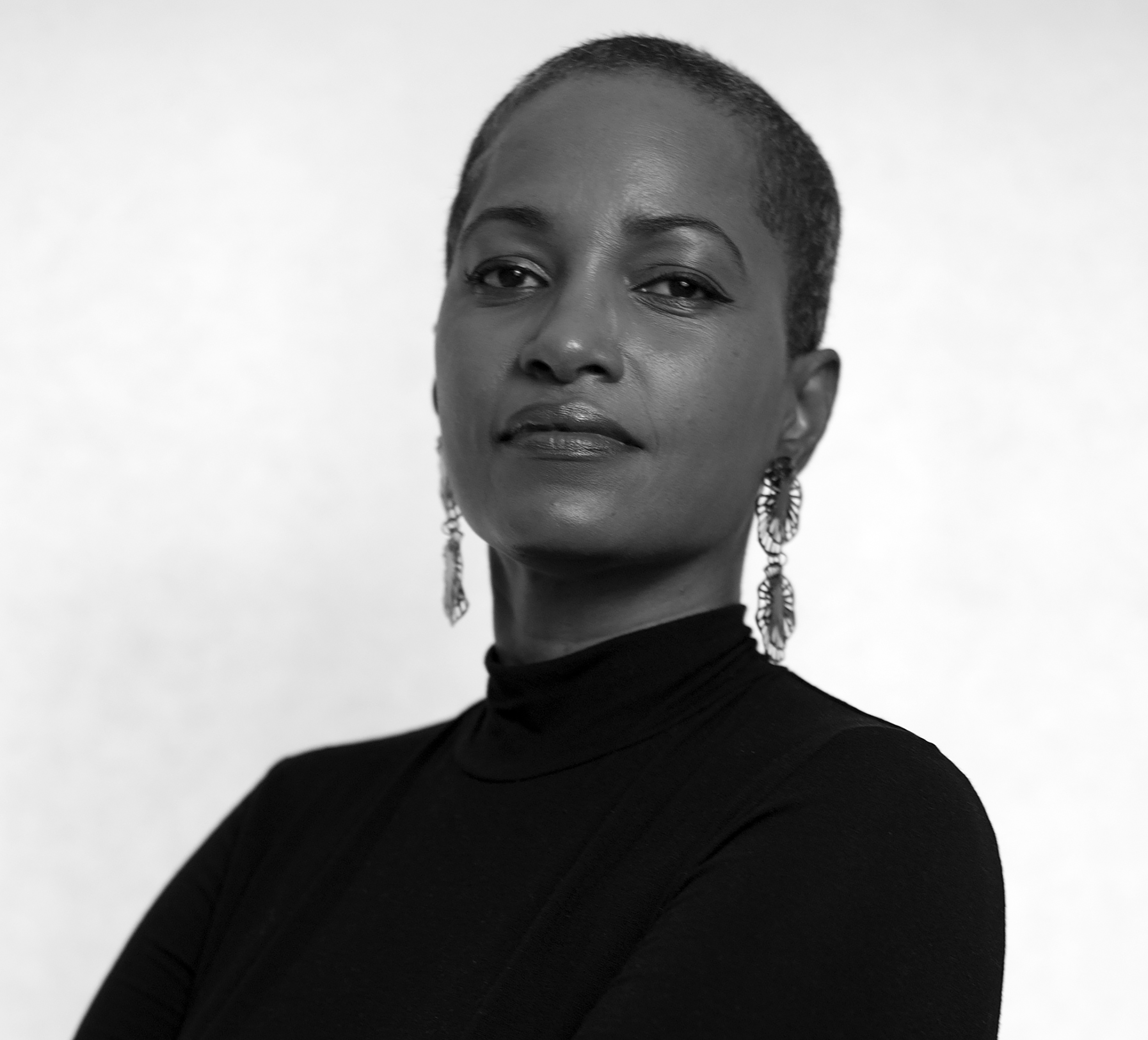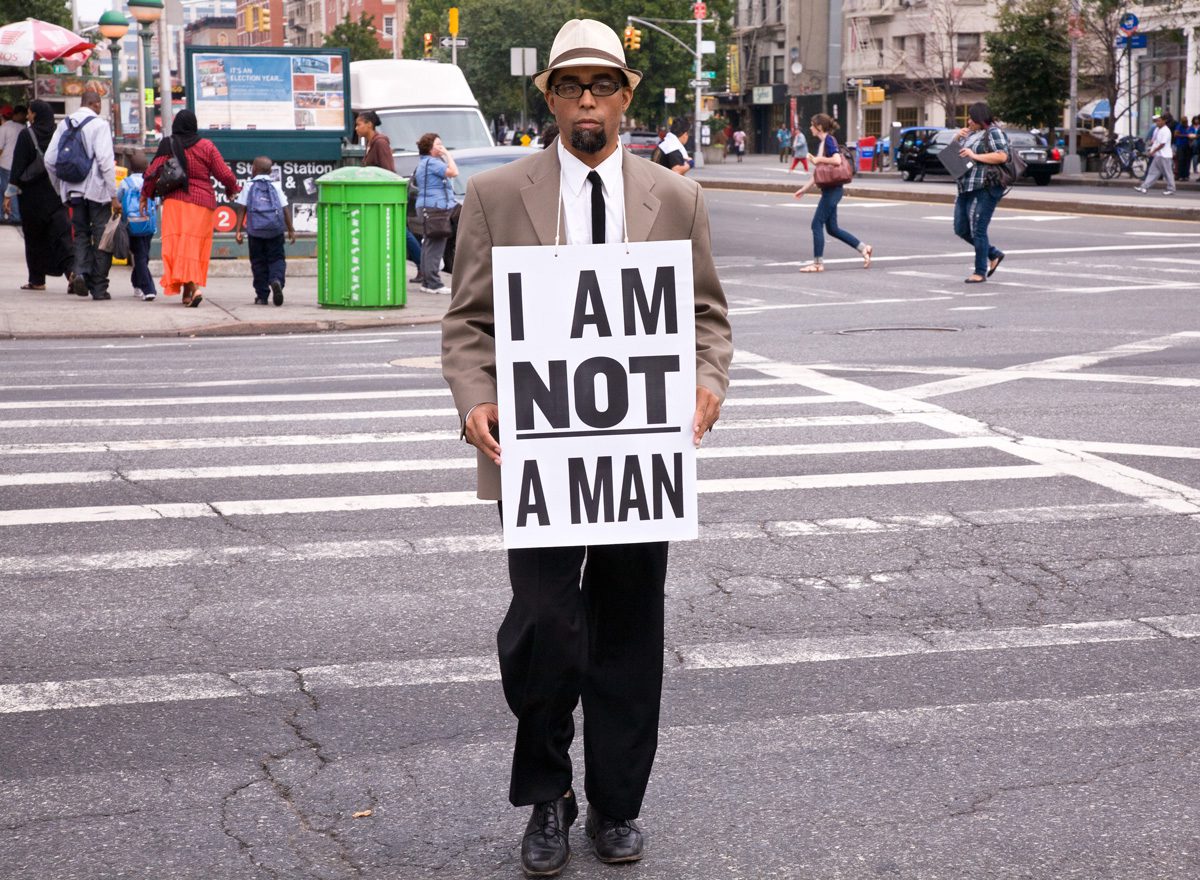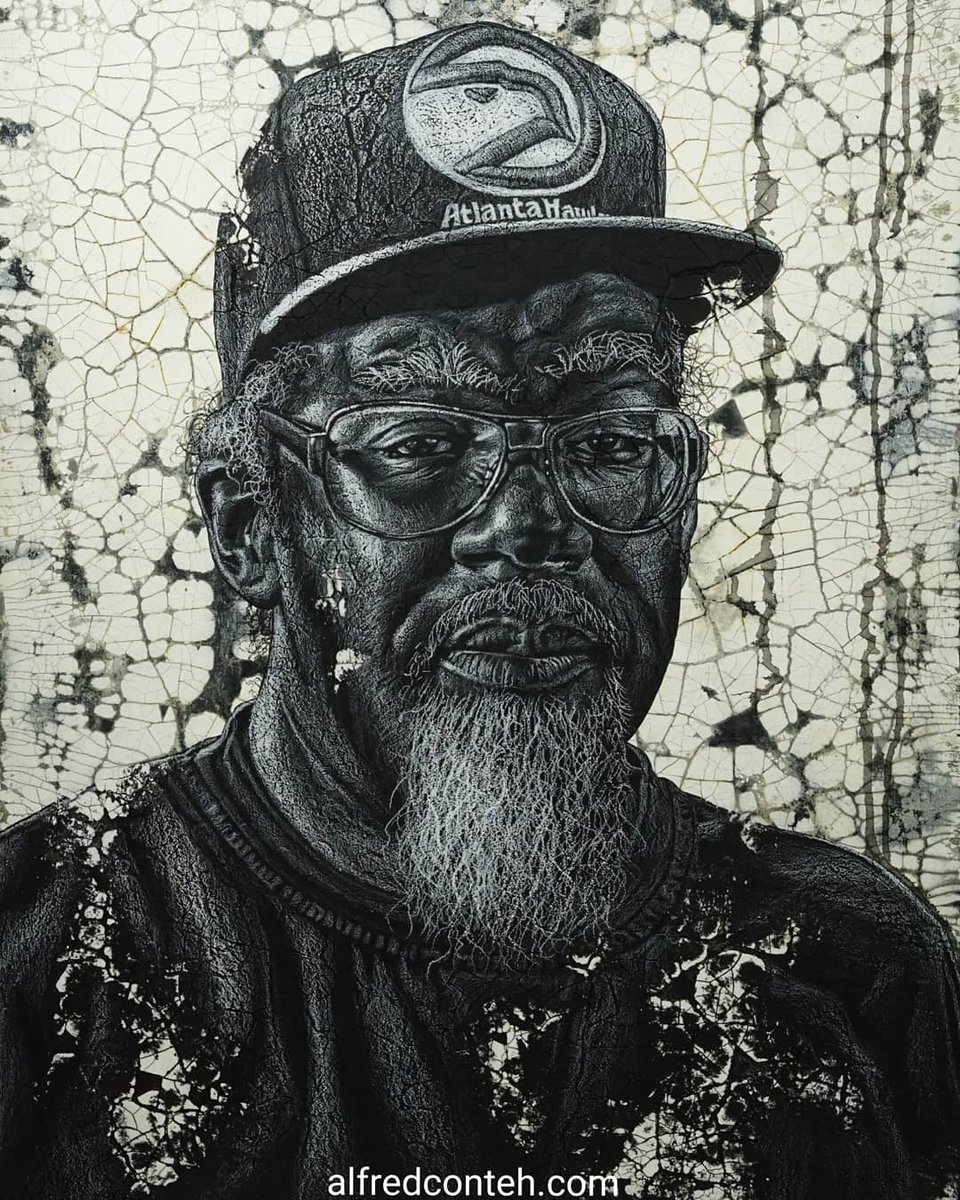A new national arts model grows in Dixwell, New Haven, Connecticut. NXTHVN, founded by acclaimed painters and Yale alums Titus Kahpar and Johnathan Brand and entrepreneur Jason Price, aims to further New Haven’s growing creative community through a collaboration among artists, art professionals and local entrepreneurs. The space aims to be public yet protected and dedicated to the community. It’s intentional with the generous resources it gives its residents: a stipend, studio space, financial advice, business management and even therapy.
NXTHVN’s latest exhibition, Not for Sale, organized by the 2023 cohort of curatorial residents Cornelia Stokes and Kiara Cristina Ventura on view from until May 14, features abstract and conceptual works by emerging and internationally recognized artists Anthony Akinbola, LaKela Brown, David Hammons, Lucia Hierro, Arthur Jafa, Emmanuel Massillon and Sable Elyse Smith.
This group exhibit speaks to the way urban Black and LatinX communities have had to deal with their culture being constantly consumed by those outside their community. With an emphasis on seemingly mundane material objects and an intentional lack of representational portraits, the show aims to make a comment on collective value in urban centers. Interestingly enough, the comment may be too neutral to be memorable.
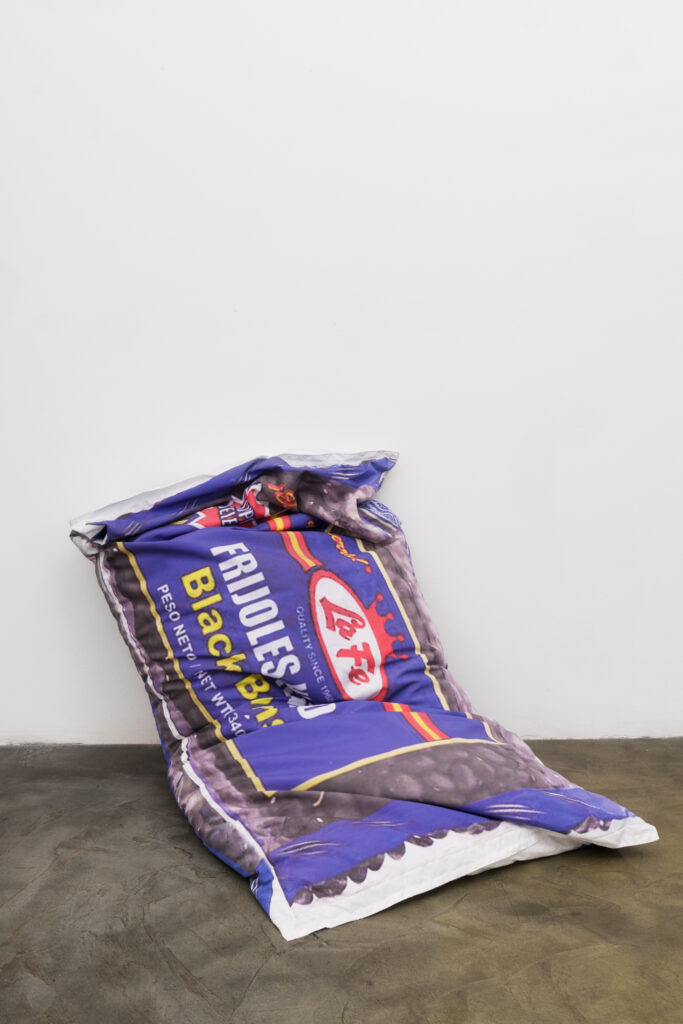
Digital print on brushed suede, packing peanuts
33 x 68 x 5 in. Photo by Chris Gardner.
Not for Sale succeeds in its ability to represent and deconstruct the corner store/bodega aesthetic and simultaneously make it high art. David Hammons’ legacy is a major reference and anchor for the show. His ability to make art out of found material objects inextricably linked to Black culture and his decision not to sell those works sets the tone of the group exhibit.
Curator Stokes commented on Hammons’ impact on the show: “David … has been doing this for decades. And so, I think that alone shows how the culture is, in a way, consistent. Black and Brown artists have been doing this, and this is not nothing new, but also paying homage to those that have come before us and set those precedents through his assemblage and conceptual-ism and his found objects, I think that has inspired so many younger artists today. The way that he carries his practice and being very selective in how he shows his work, who shows it—he’s turned down a lot of shows because he didn’t wanna sell the work, because he doesn’t have to. I think him taking agency of his market and using it to his advantage is inspiring, and we aim to do that in Not For Sale.”
Hammons’ untitled series of liquor bottles filled with mystical items like lightning bolts, hearts spiked with nails and zippers evoke images of Black spiritual traditions like Hoodoo or Voodoo, practices historically used to help practitioners cultivate currency for themselves and others in their community. Emmanuel Massillon’s Drill Music (2020) sculpture feels like a grandchild to Hammons’ work with its use of bullet shells along the horn of the trumpet and its witty title. Both artists ground the show in a specific place and time; a postindustrial port city where music, violence and spirit are present.
The inclusion of works by LaKela Brown and Yale alum Lucia Hierro bring a pop art energy and levity to the exhibit. Brown’s Compositions with Nine Gold Impressions (Large) (2022) makes a timeless artifact out of a cultural adornment by pressing large, gold-door-knocker earrings into plaster. Hierro’s Arroz Blanco and Frijoles Negro (2020) oversized bags of black beans and white rice bring absurdity and whimsy into the room. A feeling that any good corner store gives off on an especially vibrant night.
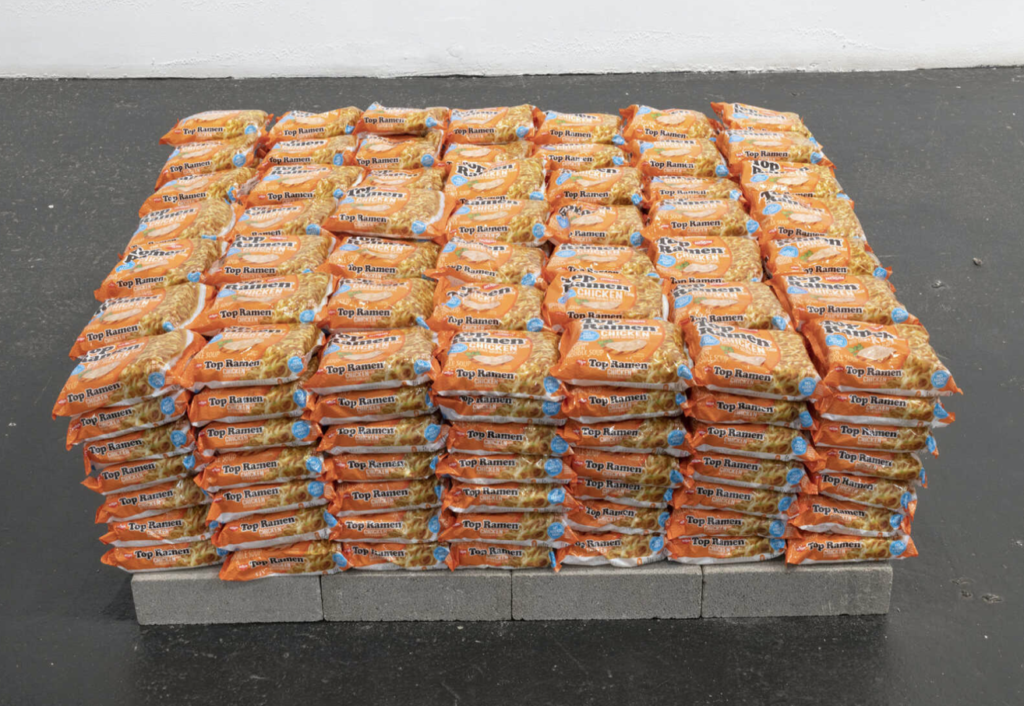
At its best, Not For Sale does a great job of synthesizing the essence of Black urban life and consumerism through found objects. The history of Black folks in this country involves learning how to adapt and make the best out of any situation. The curators who recently relocated from D.C. and New York to Dixwell for the residency found a sense of familiarity and clarity at the corner store. Corner stores are a staple food source for working-class communities.
Stokes and Ventura chose to focus on this site as a catchall for all urban centers as well as a nod to the enduring innovation that our communities have to navigate when access to fresh foods is scarce. Abstracting the objects of a culture in lieu of the actual physical form of the people of said culture is an interesting approach in an era that some believe has become oversaturated with figurative portraiture. Selected stills from Arthur Jafa’s 2016 Love is the Message are the only images of the human form featured in the entire show.
On the emphasis on material objects in Not For Sale, curator Ventura said, “… coming in as fellows here at NXTHVN, we wanted to make sure that the local community saw themselves in the work, and we felt that through the objects, through these familiar objects, they could see themselves. A lot of the work is conceptual, so we’re thinking about the meaning of all of these artists, reconfiguring, deconstructing, reconstructing these materials and turning it into something new.”
Intellectually accessible and coherent, Not For Sale highlights the cultural products of Black urban life and the transformative power of urban consumerism. The conveyer belt of consumption by way of societal stratification is often conflated with the essence of Black life in America. The conceptual connection the collection draws between Black and LatinX poor and working-class communities and “cheap” products is strained when the tension between the haves and have-nots is not made more complex.
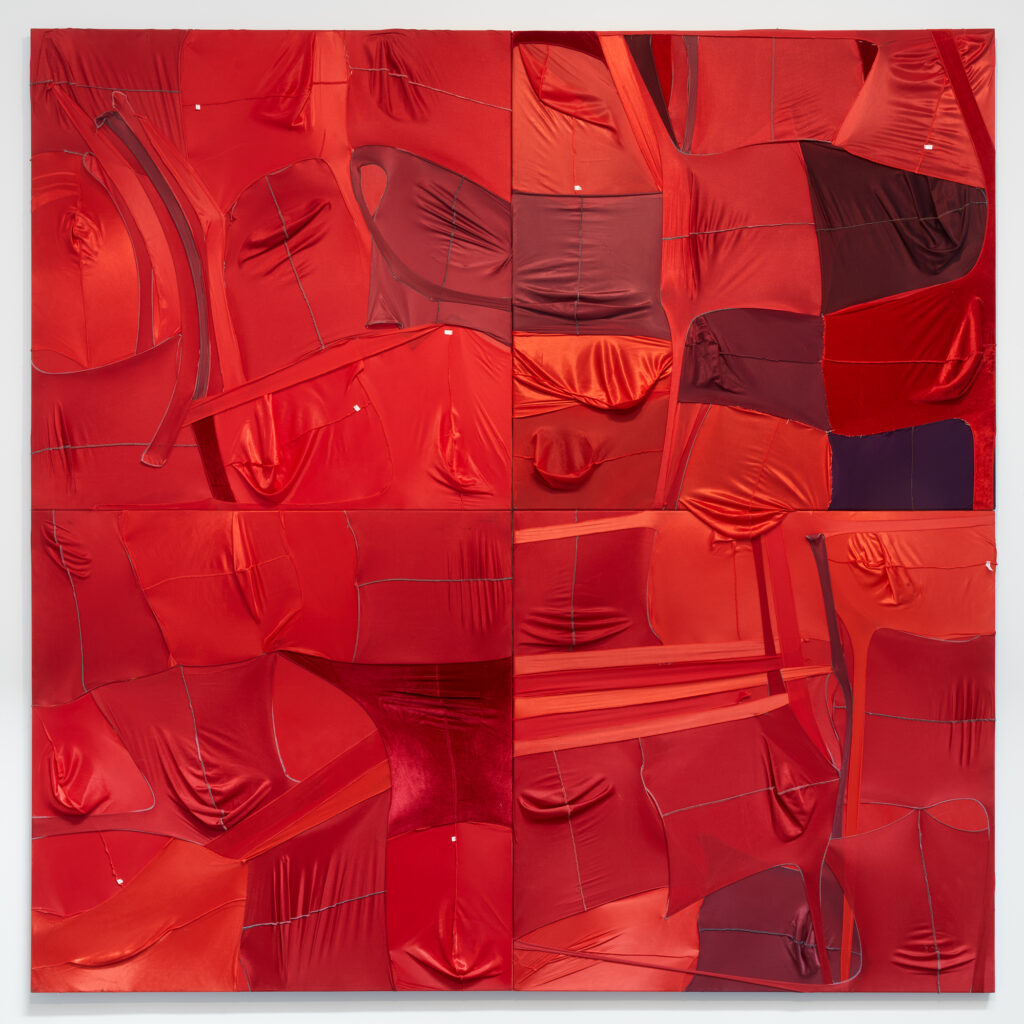
Even when the work is not literally for sale, otherwise valueless objects gain prominence when activated by conceptual artists and made into profitable high artworks. Not For Sale makes one consider how the material objects featured in this show, black beans, Black music, and Black spiritual practices, among other things, have been used toward the liberation or exploitation of Black and LatinX people. This show could be in any major urban space and make the same surface claims.
As a result, the impact of Not for Sale is less potent. When all postindustrial cities are easily distilled into their corner stores items, music history, violence and food products, what happens to the uniqueness of a city? I don’t come away from this show knowing anything unique about the history or community of Dixwell. Perhaps this is because the curators were thrown into producing a show fairly early into their residency.
With time and perspective, I hope that the second show of their NXTHVN residency will have a stronger and more unique message. For all of the references to a larger “Black” culture, I know nothing about what it means to be from Dixwell. A problem that perhaps the inclusion of at least a single artist from Dixwell could have solved. NXTHVN provides artists with all the tools needed to succeed in the business market of art, but what about how to succeed in the local community with the people who always have been in Dixwell that could provide unique or otherwise unknown insight into what Dixwell as a place is about?
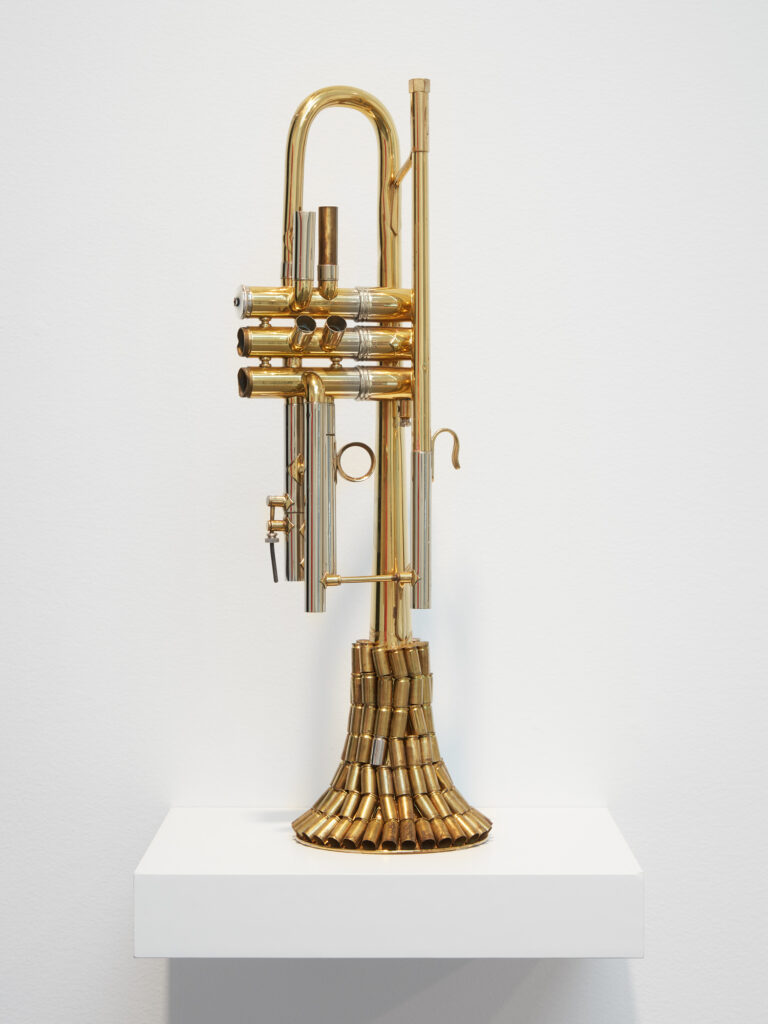
Bullet Shells & Trumpet
19 x 6.5 x 4.5 in. Photo by Chris Gardner.
As artist-led gentrification permeates working-class communities (yet again) artists and spaces dedicated to nurturing artists must actively become agents of chaos against neo-liberalism or realize their own involvement in the turnover of a community. Although the artworks featured in the Not for Sale show have no price listed, will this new model of an arts residency raise the price and the stakes for the community of Dixwell? More than likely, yes. But how will NXTHVN and its residents prevent this space from becoming another “pioneer of gentrification?” Better yet, is that even a fair question to ask of an arts institution led by Black artists in 2023?







